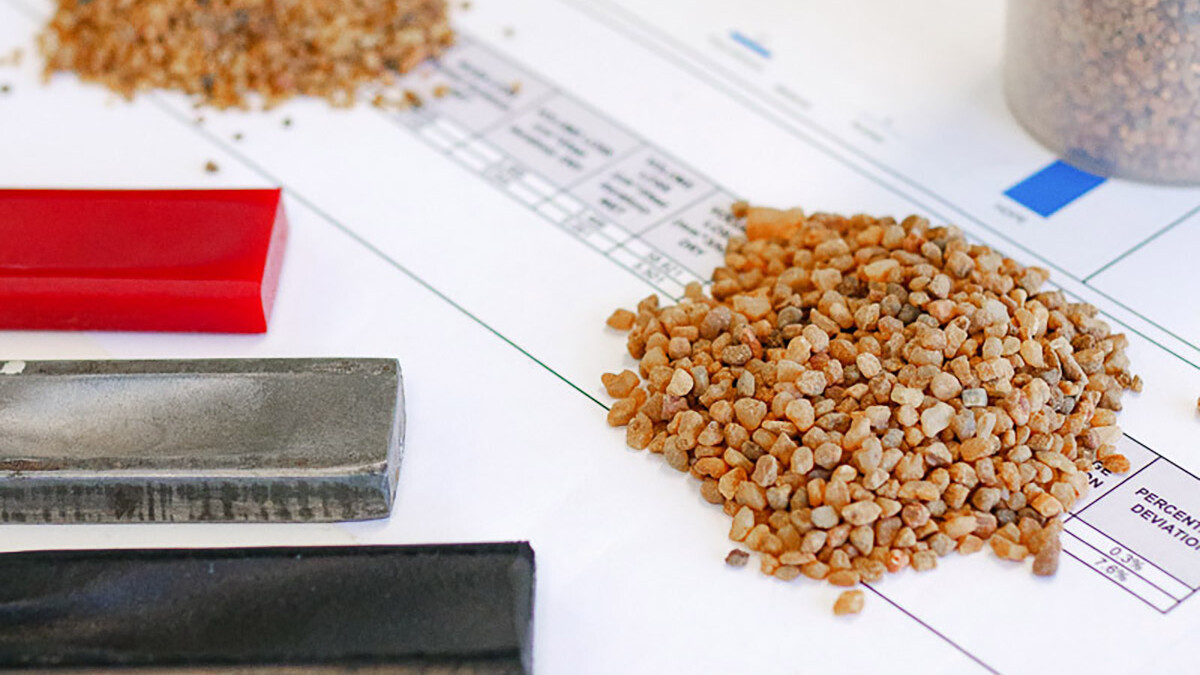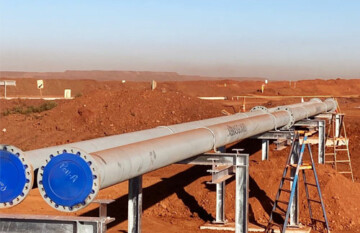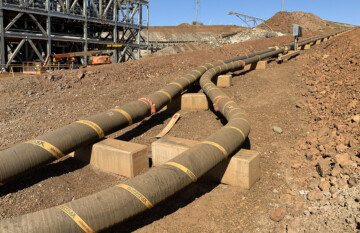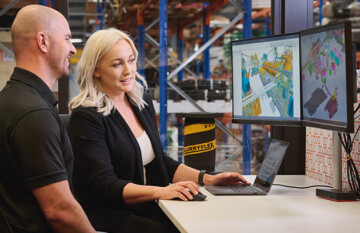When it comes to designing tailings pipelines, there’s one key objective – a leak-free pipeline that lasts the life of the mine.
It’s one area sites want to keep project costs down as much as possible, which means they will often select unlined or HDPE lined steel.
It’s not a great strategy.
We’ll show you why in this article where we compare the different options and what it will cost you in the long run.
Tailings pipeline options
When it comes to tailings pipelines, there are four main options – unlined bare steel, HDPE lined steel, rubber-lined steel, and polyurethane lined steel. We cover the main pros and cons of each material type, but you can read about the different liners here.
Table 1: Pros & Cons of Tailings Pipeline Materials
| Piping material | Pros | Cons |
|---|---|---|
| Unlined (bare steel) | Cost effective | Highly susceptible to abrasive wear and corrosion-erosion effect. |
| HDPE-lined steel | Corrosion resistant | Fast wearing in abrasive applications |
| Rubber-lined steel | Good option for high-wearing applications | Sensitive to corrosive slurries and best suited for short piping distances due to cost |
| Polyurethane-lined steel | Good option for abrasive and corrosive slurry | Higher upfront capital cost |
How the different options stack up
For our calculations, we looked at the overall costs for a 5km, DN400 slurry pipeline for a 5mtpa gold processing plant with a 30-year life of mine (LOM). Tailings from gold processing is abrasive and corrosive, so it’s a good indicator of how different piping will wear under severe service.
We’ve factored in the pipe cost, installation costs, couplings (we’ve used Victaulic in this example), the LOM and the piping’s average wear life (Table 2).
Table 2: Slurry Pipeline Cost Analysis
| Unlined steel 12m spools | Rubber-lined steel 6m spools, 10mm liner | HDPE-lined steel 12m spools, 20mm liner | Polyurethane-lined steel 18m spools, 6mm liner | |
|---|---|---|---|---|
| Pipe Cost | 1x | 3.5x | 1.75x | 1.75x |
| Installation Cost | $750,000 | $1,500,000 | $750,000 | $500,000 |
| Couplings | $200,000 | $400,000 | $200,000 | $133,000 |
| Expected Wear Life | 5 | 20 | 15 | 30+ |
| Pipeline Replacement over LOM | 6 | 2 | 2 | 1 |
| % Saving over LOM vs unlined steel | - | -21% | +33% | +69% |
*Total cost of ownership based on a 5km, DN400 gold plant tailings pipeline with Victaulic ends. Comparison includes pipe, installation costs (trucks, cranes and labour) and average wear life of each technology. All prices are indicative and provided for information purposes only.
Pipe cost
Pipe cost has been indexed against the price of unlined steel. HDPE and polyurethane-lined pipelines are comparatively priced. The cost of rubber-lined steel pipe for the pipeline is higher due to the shorter spool lengths.
Installation costs
Pipeline spool lengths impact on installation costs.
In this scenario, the installation costs for 12m spools are $750,000. With rubber-lined steel, the costs double due to the shorter spools. So, you need twice as many trucks, cranes and manpower for installation.
Conversely, using 18m lengths of polyurethane-lined steel delivers a 30% saving on pipeline installation costs. There’s fewer truck and cranes needed and less connects to bolt up. There’s more detail in this article where we compare 12m vs 18m length pipeline costs.
Couplings
Coupling cost is tied to spool length.
For 12m lengths, the cost is the same, while on rubber-lined pipe it doubles due to the 6m lengths.
On the other hand, you need 30% fewer couplings if using 18m polyurethane-lined spools.
Wear life
Unlined steel is highly susceptible to abrasive wear and corrosion – two very common wear types in gold tailings. Under these conditions, the pipeline will need to be installed and then replaced at least twice to last the life of the mine.
HDPE liner protects the steel substrate from corrosion. But HDPE-lined steel wears very quickly in abrasive conditions. With a predicted wear life of 12 years, that means it will need to be replaced at least once to last the 30yr LOM.
Rubber-lined steel will give you a much better wear performance than unlined and HDPE-lined steel. But with a 20-year wear life you risk it not lasting the length of the project. Plus, it’s a lot more expensive option for long distance pipelines because of the higher installation costs.
Polyurethane-lined steel is the most cost-effective in this scenario. It has a lower installation cost and will last the distance due to its wear and corrosion resistance.
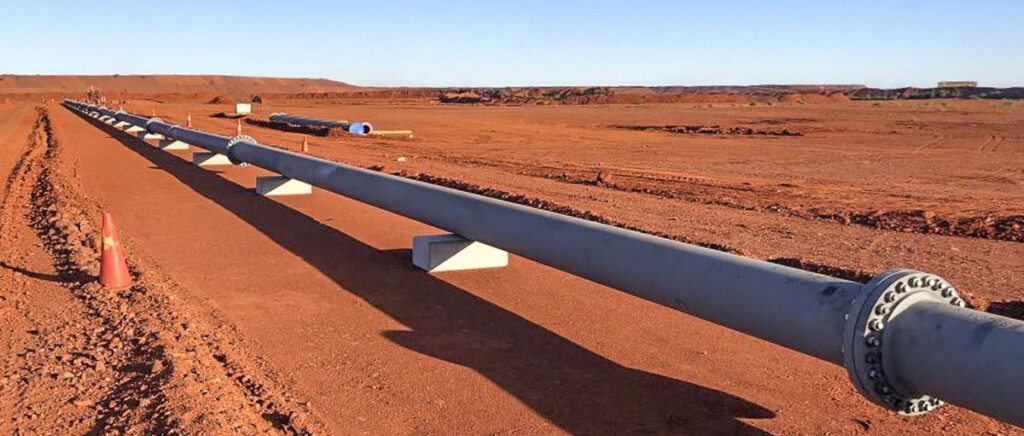
Consider your capital productivity
Defaulting to old technology – unlined, HDPE and rubber – costs more in the long run.
Unlined steel may seem like the most economical upfront but consider the cost and resource burden of having to replace the pipeline three times over the life of the mine.
HDPE-lined steel is often the next choice after unlined steel. It performs better in this instance but will still need to be replaced due to wear.
Rubber-lined steel is better suited for abrasive slurry, and comparable to using unlined steel. But the short pipe lengths means that installation costs are the highest of all the options. With a 20-year lifespan, you will need to replace it again or spend a lot more on maintenance to see it through to mine closure.
Polyurethane-lined steel will give you a far better total cost of ownership. It will last for the LOM (and likely longer) and lower installation costs due to the longer spool lengths. Once you factor this in, it’s a far better option that improves the project’s capital productivity and lasts the life of the mine.
What this means for your next pipeline
A new pipeline is a significant capital investment, so you want something that’s going to last the distance.
Unlined steel or HDPE might be appealing initially but in the long term, this could end up costing far more once you factor in future replacement costs and lost production time.
Specifying polyurethane-lined steel on your next tailings pipeline will significantly lower your total cost of ownership and deliver a reliable and low maintenance tailings system.
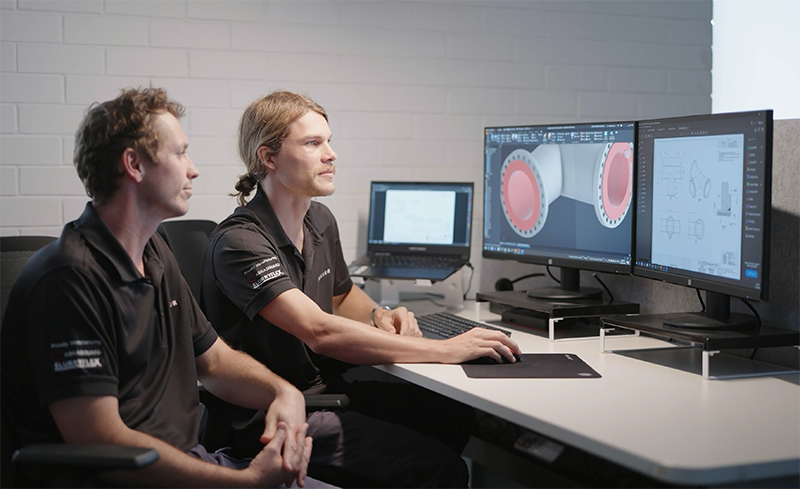
Get practical recommendations for your pipeline
Reach out to setup a call with a pipeline specialist. We'll give you clear recommendations and advice to help you with your piping specification, so you can confidently design a pipeline that lasts.
"*" indicates required fields








